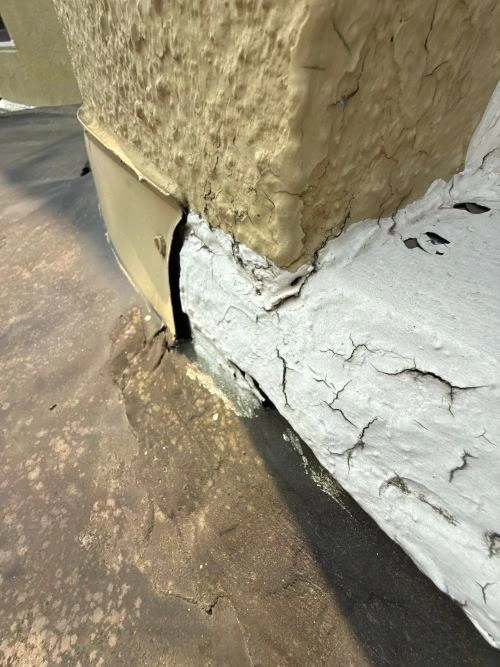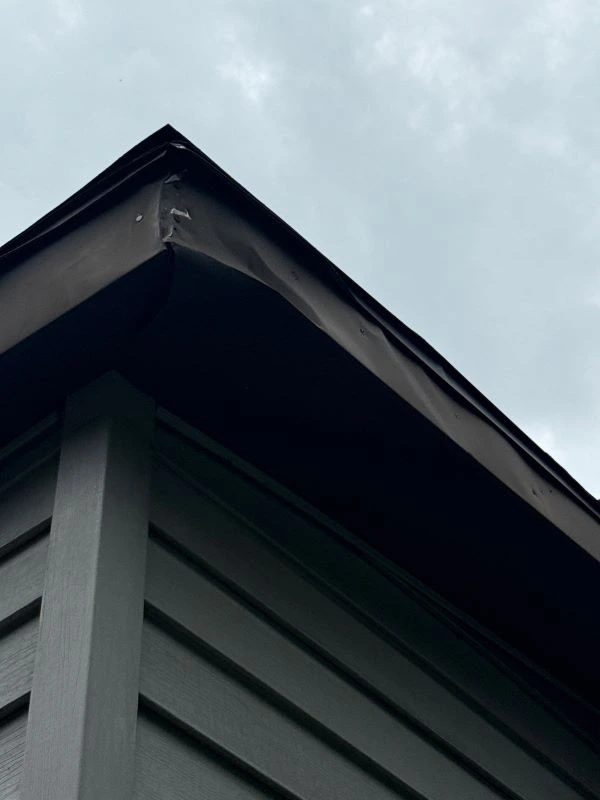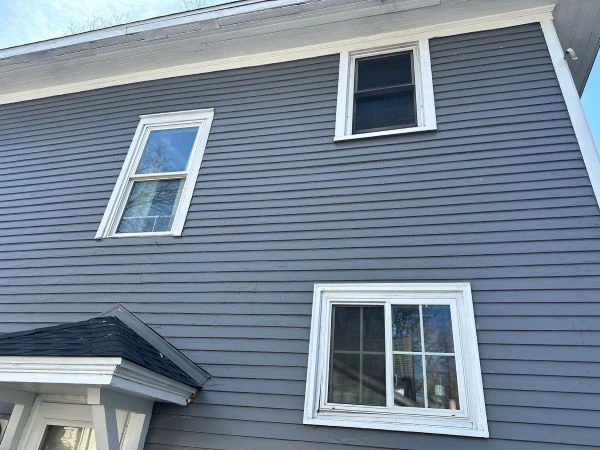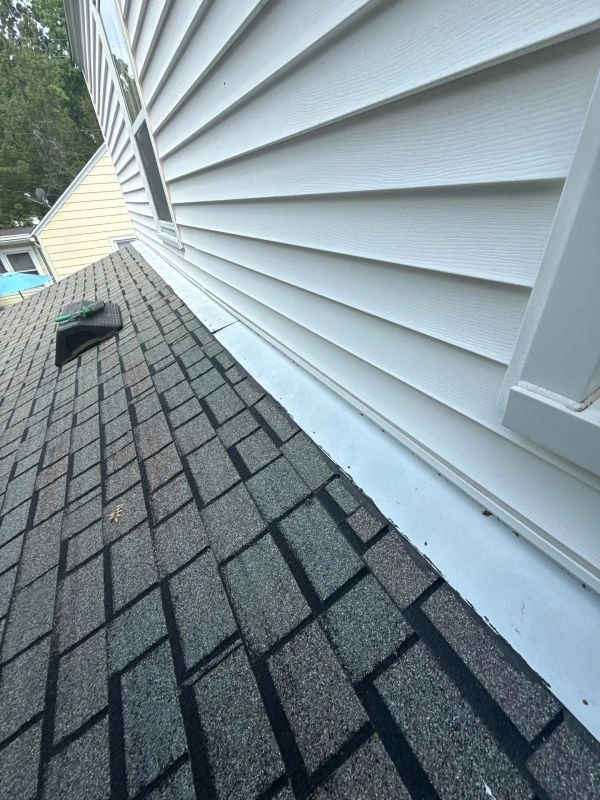Roof Flashing Repair: Why Small Fixes Prevent Big Problems
When it comes to the longevity and protection of your roofing system, one of the most overlooked yet critical components is the roof flashing. Made from materials like galvanized steel, aluminum, or copper, flashing is a thin barrier that helps divert water away from roof features such as chimneys, skylights, vents, and valleys. Without properly installed and well-maintained flashing, even the most durable roofing system can suffer from costly water damage. At Worthy Construction LLC, we believe that addressing small issues with flashing today can prevent major, expensive repairs tomorrow.

What is Roof Flashing and Why Does it Matter?
Roof flashing acts as a waterproof barrier between your roofing materials and areas where water has the potential to seep in. It is strategically placed at roof joints and intersections—spots that are naturally prone to leaks. Think of it as the unsung hero of your roof, keeping moisture out of places where shingles alone can’t provide full coverage.
Without flashing, water would easily penetrate these vulnerable points, causing rot, mold, structural damage, and insulation issues. A small crack in flashing may seem insignificant, but over time it can escalate into a major problem requiring extensive repairs.
Common Problems with Roof Flashing
Even though flashing is designed for durability, it is still susceptible to wear and tear over time. Common challenges we often face include:
- Corrosion and Rust
Metal flashing is prone to rust when exposed to constant moisture. Once corrosion sets in, it weakens the material, leading to cracks and holes. - Improper Installation
Inexperienced contractors may install flashing incorrectly, leaving gaps or failing to secure it tightly. This mistake often results in early leaks. - Weather Damage
High winds, heavy rain, and snow can cause flashing to lift or warp, creating openings for water intrusion. - Sealant Failure
Flashing is often sealed with caulking, which can dry out, crack, and lose adhesion, allowing leaks to develop over time. - Aging Roof Systems
As roofing materials age, the flashing around them may also deteriorate, requiring either patchwork or replacement to maintain effectiveness.
Signs You Need Roof Flashing Repair
Spotting flashing issues early can save you thousands in future repair costs. Here are some warning signs to look for:
- Water Stains on Ceilings or Walls
Brown or yellow stains often indicate that water is seeping through the roof and into your home. - Damp or Moldy Attic
Excessive moisture in your attic can be traced back to failing flashing that’s letting water in. - Visible Damage on Flashing
Bent, cracked, or rusted flashing seen from the ground or roof level means it’s time for repair. - Peeling Paint or Bubbling Drywall
Moisture from roof leaks can damage interior surfaces, signaling possible flashing problems. - Loose Shingles Near Roof Joints
Shingles lifting near chimneys, vents, or skylights can indicate that flashing underneath is compromised.
DIY Roof Flashing Repair: Should You Try It?
Some homeowners attempt DIY roof flashing repair to save money. While minor resealing jobs can be manageable, most flashing issues require professional expertise. Climbing onto your roof carries risks, and improper repairs often make matters worse.
If you do attempt a DIY repair, follow these steps:
- Inspect Thoroughly – Check flashing around all roof penetrations, valleys, and joints for visible damage.
- Remove Debris and Old Caulk – Clean the area to ensure proper adhesion.
- Reapply Sealant – Use roofing-grade sealant to reseal small cracks or gaps.
- Replace Small Sections – If you notice short lengths of damaged flashing, carefully replace them with new pieces.
- Call a Professional if Unsure – When in doubt, always seek help from a licensed contractor for proper, lasting results.
Why Professional Roof Flashing Repair Saves Money
Searching for roof flashing repair near me often leads homeowners to professional roofing companies like ours. While DIY solutions may seem cheaper, professional repairs offer long-term value. Experts can identify hidden issues, use the right materials, and ensure proper installation. This not only prevents repeat roof repairs but also safeguards your entire roofing system.
How to Maintain Roof Flashing for Longevity
Routine maintenance plays a huge role in preventing costly flashing failures. Here’s how you can extend the life of your roof flashing:
- Regular Inspections – Schedule professional roof inspections twice a year, especially after severe weather.
- Keep Gutters Clean – Clogged gutters can cause water to back up, increasing pressure around flashing.
- Trim Overhanging Trees – Falling branches can damage shingles and flashing.
- Check Sealants Frequently – Look for cracked or missing caulk around flashing joints.
- Replace Old Roofing Materials – Aging shingles and underlayment can compromise flashing, making full roof replacement a smarter choice.
When Roof Flashing Repair Isn’t Enough
Sometimes, patching up flashing isn’t sufficient. If your roof is older than 20 years, multiple flashing failures may signal the need for a full roof replacement. At Worthy Construction LLC, we assess the overall health of your roof to recommend whether repairs or replacement is the most cost-effective solution.
Why Choose Worthy Construction LLC for Roof Flashing Repair?
At Worthy Construction LLC, we provide reliable roofing, siding, gutter, window, and insulation services. Our experienced team specializes in flashing repair and installation, ensuring your home stays protected year-round. We combine expert craftsmanship with high-quality materials, giving you peace of mind that your investment will last.
- Phone: (269) 207-7704
- Email: admin@worthyroof.com
- Website: worthyroof.com
FAQs About Roof Flashing Repair
1. How often should I inspect my roof flashing?
You should inspect your roof flashing at least twice a year—once in the spring and once in the fall. This helps catch early signs of damage and prevents leaks during heavy rain or snow. Inspections after severe storms are also highly recommended.
2. Can damaged flashing be repaired, or does it need full replacement?
Minor damage such as small cracks or worn sealant can often be repaired with resealing. However, if the flashing is severely corroded, bent, or missing sections, full replacement ensures a long-lasting fix.
3. What type of flashing material lasts the longest?
Copper flashing is the most durable option, lasting up to 50 years with proper care. Galvanized steel and aluminum are more affordable alternatives, though they typically last 15–25 years depending on climate conditions.
4. Is roof flashing repair expensive?
The cost depends on the extent of damage and the type of flashing used. Small resealing jobs are relatively inexpensive, while replacing flashing around chimneys or skylights may require more labor and materials. Hiring a professional ensures better value and long-term protection.
5. Can poor roof flashing installation void a roof warranty?
Yes. Many manufacturers’ warranties require flashing to be properly installed. If an unlicensed contractor installs flashing incorrectly, it may void the warranty on your roof, leaving you responsible for repair costs.






Trustindex verifies that the original source of the review is Google. Worthy Construction just replaced my roof, skylights, and gutters. I live out of town and selling my parent's house so this company came through a personal referral. Khari and team were such a joy to work with. He answered my questions, kept me updated on progress, did everything he said he was going to do, and met all of commitments on time. It's not easy to know what's happening while living out of town and I appreciate Khari's communication skills, timeliness, and overall this has been an amazing experience! I highly recommend Worth Construction!!Trustindex verifies that the original source of the review is Google. Worthy Construction did an excellent job replacing our roof. They were very easy to work with throughout the entire process. They answered all of our questions promptly and delivered a great finished product. I’d highly recommend them for your roofing needs.Trustindex verifies that the original source of the review is Google. Very professional, great guy that will work with you. Highly recommended for sure. Mr. Worthy is very dependable! He completed our roof on time and as expected!Trustindex verifies that the original source of the review is Google. Greatest service ever! Super fast and did a fantastic job. I will definitely save them to do future jobs that need to be fixed. The greatest ever!Trustindex verifies that the original source of the review is Google. My roof was very damaged, I had a huge hole in my roof from constant tree debris and age. I didn’t have any expectations going in to the project but I was greatly impressed with the speed of service! The ten we done in 2 days! They cleaned up afterwards, the materials were great quality and . The team replaced my entire rooftop. Mr. Worthy was very respectful and responsive to my concerns regarding the project, I would certainly recommend his company to anyone looking for a new rooftop!Trustindex verifies that the original source of the review is Google. He was a pleasure to work with. They were prompt and professional the whole project. He kept me informed the whole process and his work was of the highest quality. They were very respectful of my and my neighbor's properties. I am very very happy with the work they did for me.Trustindex verifies that the original source of the review is Google. Quality work! Highly recommended!Trustindex verifies that the original source of the review is Google. I didn't have much word done, but I called after noticing a leak in my ceiling after a storm. Khari answered right away and was able to come and take a look within a couple days. He found the problem and was able to fix if with just caulking for no charge, 100% recommendTrustindex verifies that the original source of the review is Google. We had our roof and some gutters done by Worthy Construction and not only was it very timely, but they also were very friendly. We had the unfortunate experience of having to replace roof sooner than expected and they came and explained everything to us and then gave us options that really worked for us. Khari and his team did a wonderful job for us and I would recommend their service again and again. When they were working on our roof they noticed a leak in one of our gutters and replaced that as well which was very helpful!Trustindex verifies that the original source of the review is Google. I needed a roof replacement, Mr. Worthy worked with me and my insurance company from start to completion. He gave me a time frame and he stuck with it. High praise for him and his professional team.




